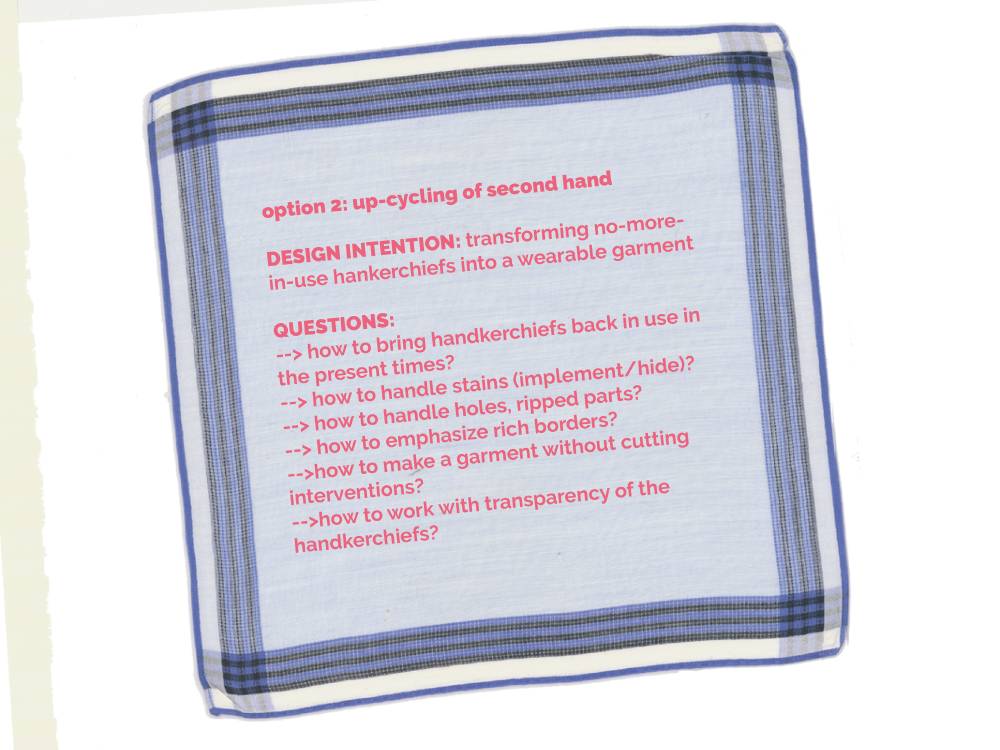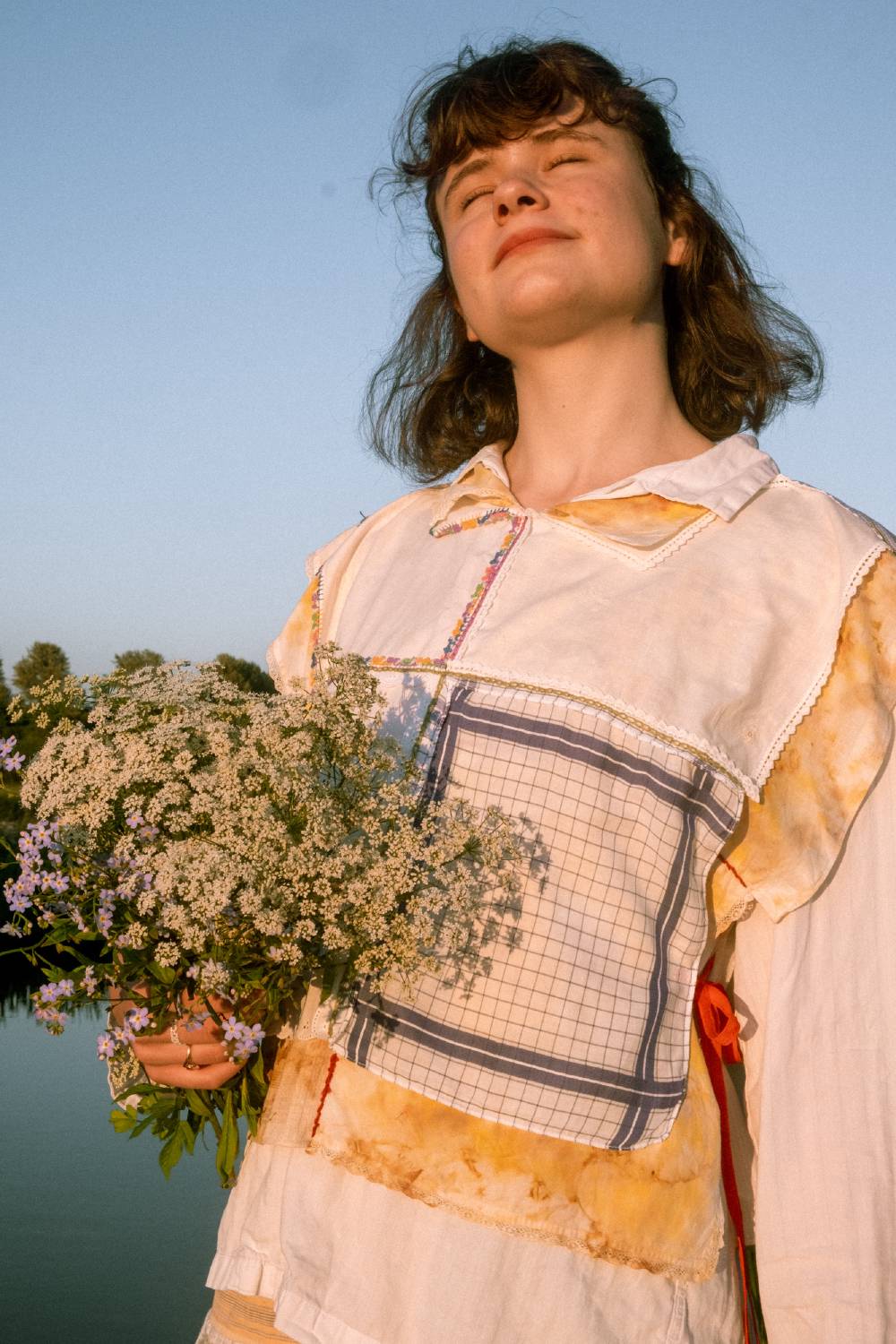While doing my Erasmus+ exchange program at Design School Kolding in Denmark, one of the courses I did was Design for Change, which was divided into three parts. The past, the present and the future. During the past part we acquired insights on practices and strategies prolonging garments lifetime from the past with focus on product longevity. Our assignment was to develop a design proposal within the concept of up-cycling / maintenance of second hand.
While doing a field study in second hand stores in Kolding, I came across beautiful handkerchiefs that are not in use anymore in the common days. They made me wonder how to preserve this little piece of cloth into which so much detail was put. Some had little holes, others stains. Some were big, others small. Some had embroidered details, others crochet borders. Some were white, some had traditional coloured chequered motives. I sorted them by size, motives and colours.
My design intention was transforming no-more-in-use handkerchiefs into a wearable garment.
QUESTIONS:
—› how to bring handkerchiefs back in use in the present times?
—› how to handle stains (implement/hide)?
—› how to handle holes, ripped parts?
—› how to emphasise rich borders?
—› how to make a garment without cutting interventions?
—› how to work with transparency of the handkerchiefs?
Questions led me to answers using traditional techniques of patchwork, embroidery and plant print-dying.
Jadwiga Ligeza is wearing the upcycled handkerchief outfit; read about how the stars aligned for us and how coincidences are so wonderful in my blog post ** Jadwiga and the handkerchief story.**
Design for Change course, THE PAST, April 2022, DSKD
Mentor: ULLA RÆBILD
















